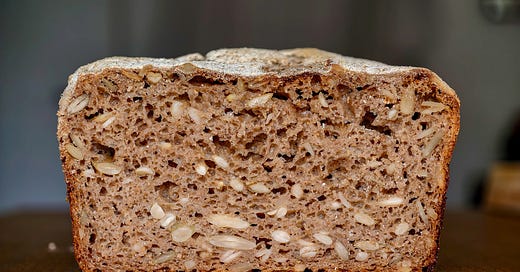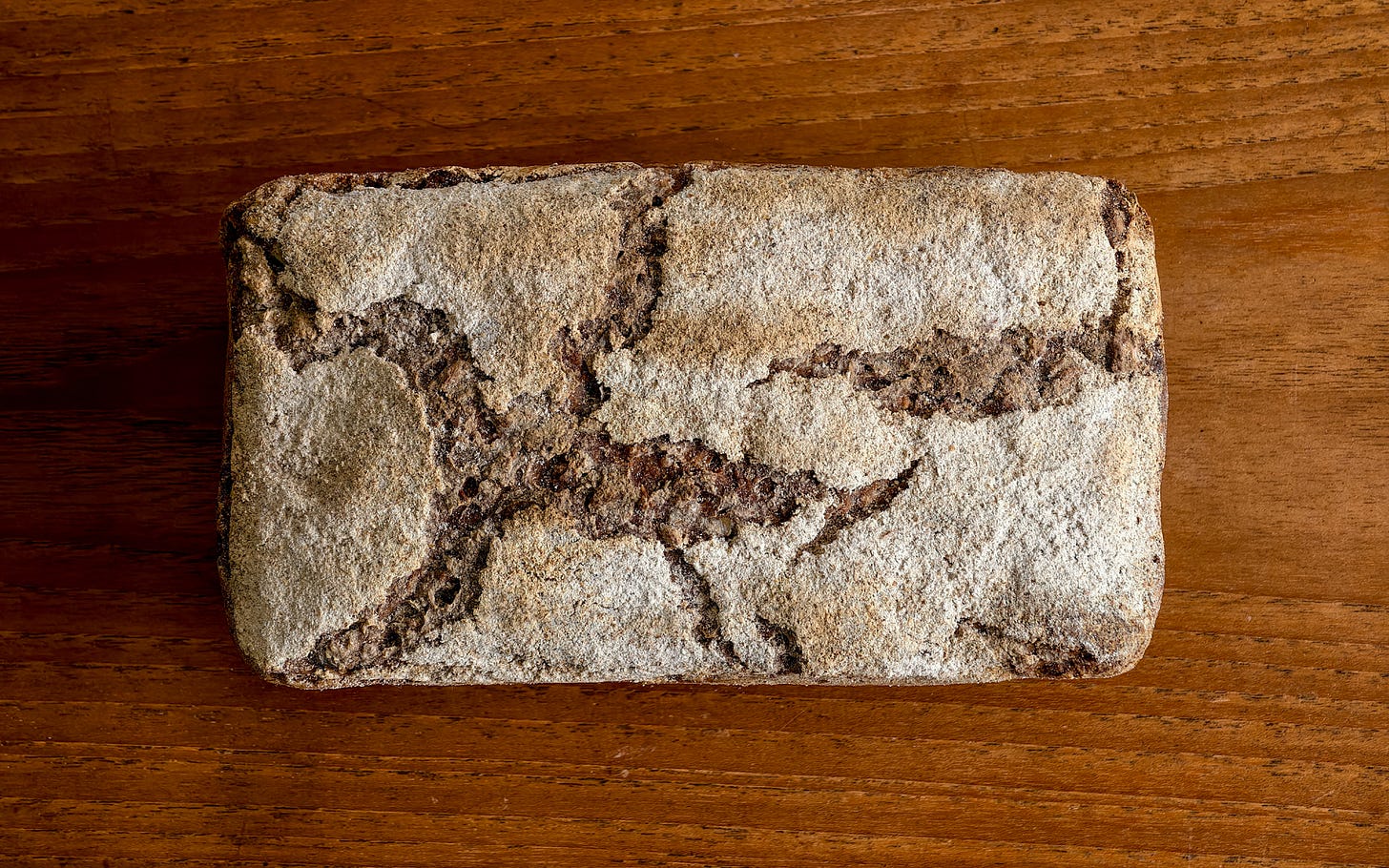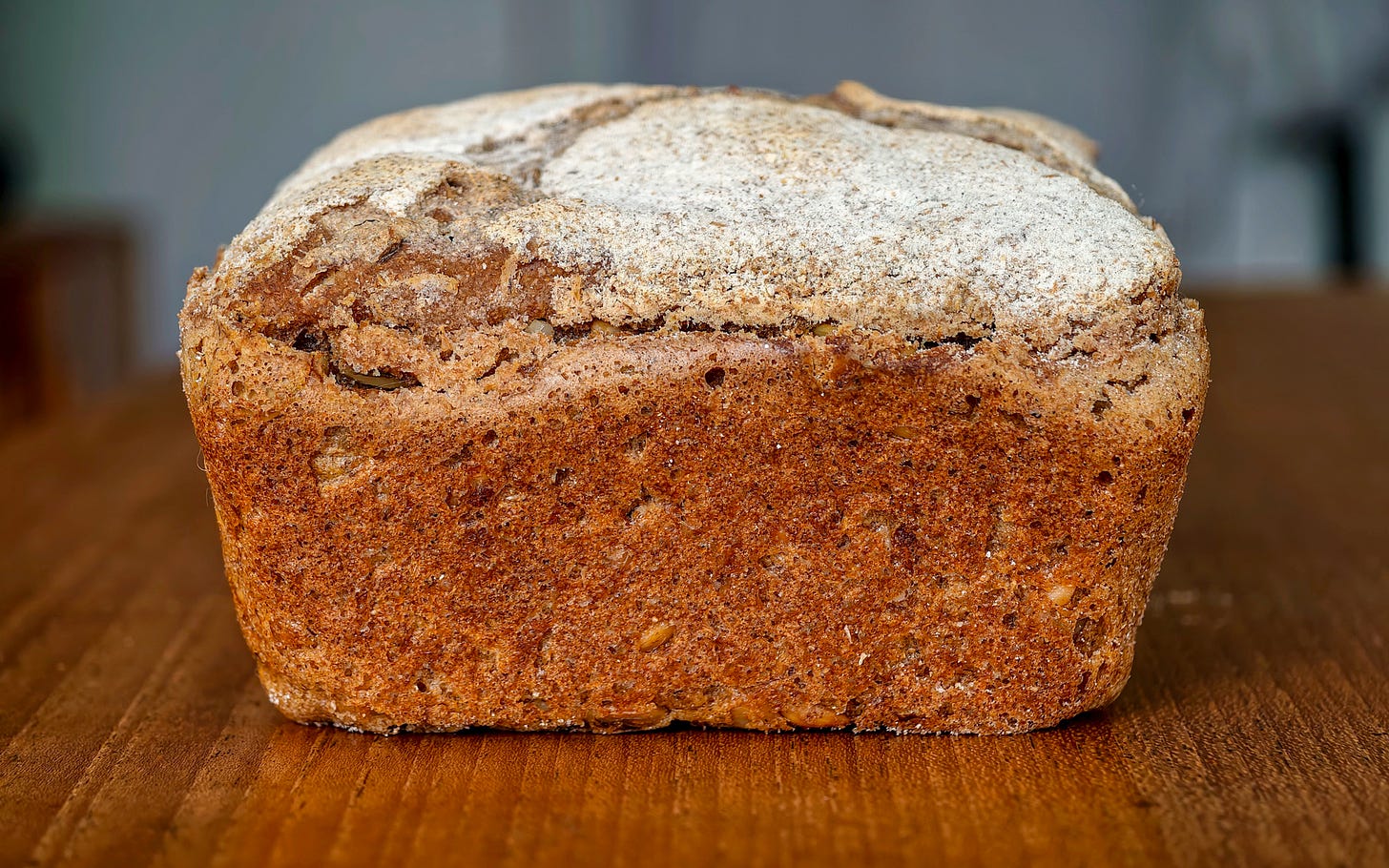Meet the bread that Vivian thinks is “perfect.”
I’ll admit, I’m not a natural fan of dense, dark rye breads like this myself — give me a big, soft, waxy sourdough any day — but they’re Vivian’s obsession, helped along by some time spent living in Berlin a few years ago.
No rye loaf she could find in London would cut it though, so I set about making my own. I wanted it to be dense, but not dry, maintaining that waxy quality, and with the crunch of seeds in contrast. It had to be sourdough, and more than that, it had to be sour. It’s that slight sharpness that lifts the heaviness of the rye, that adds a depth of flavour to make this a bread you can eat by itself, untoasted, entirely unadorned.
I tried a lot of things to get that sourness. I used more starter, then less starter. I underfed my starter, starved it a little to amp up its acidity. But the best solution is simpler: time. A long, slow, cold ferment in the fridge brings all that extra flavour out, and requires no extra work beyond waiting. I used to bake it after 24 hours, but have found I can push it to 36 for even extra oomph, and only the earliest signs of overproofing. If you’re short of time you can instead ferment for 3-4 hours at room temperature, which will be enough for the bread to rise, but you’ll get a more muted flavour.
As this is a sourdough, you will need a starter, and you’ll have to feed it with rye. If you don’t normally, that’s fine — this involves a lot of starter and a big feed, so even if your starter is normally white, it won’t be by the time we’re done. I use a simple 1:2:2 starter:flour:water ratio for the feed, which I do the day before I’m ready to mix the dough. You should soak the seeds at the same time — don’t skip this step, otherwise they’ll soak up water from the dough and dry the bread out. The other step you can’t skip is letting the bread sit for a day after baking, which lets it cook through and set; without this, you’ll have a loaf that’s gummy rather than waxy.
That does mean this is a long, slow process that runs five days beginning to end — if you feed your starter on Monday, you won’t be eating bread until Friday. But you’ll never need to do more than a few minutes of work at a time, and there’s no kneading involved at all, so this is arguably even less effort than my soda bread. And hey, you can’t rush perfection.
Ingredients
Keep reading with a 7-day free trial
Subscribe to Braise to keep reading this post and get 7 days of free access to the full post archives.







